Mykonos ...more on Mykonos.
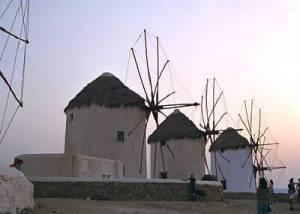 ...Indeed, the Jewel of the Aegean is just as bright and shining as ever. But, just in case you think that this is the sum total of what Mykonos Island represents, please read the "Mykonos Jewels" text below to get a glimpse of a few other facets of the jewel, of which you might not be aware. ...Indeed, the Jewel of the Aegean is just as bright and shining as ever. But, just in case you think that this is the sum total of what Mykonos Island represents, please read the "Mykonos Jewels" text below to get a glimpse of a few other facets of the jewel, of which you might not be aware.
Mykonos has a wonderfully rich and variegated past, a marvelous history, and an honored place in Greek mythology. There are always surprises to be found here!
The light of Apollo is evident everywhere on the island, and art, beauty, and form are all visible in the simplicity and eloquence of dazzling white structures and a centuries-old labyrinth of tiny streets and alleyways. The light is further enhanced by the reflection of aqua jewelled and crystal clean waters. All of this, combined with outstanding accommodation, a shopping paradise, excellent cuisine, and marvelous entertainment settings, proves again and again, that Mykonos is the quintessential island paradise of the Aegean Sea.
"Mykonos Jewels"
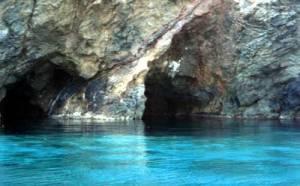 • The matriarchy of this island was established because the men were away fighting, fishing, or pirating! Their absences were so prolonged that the women were compelled to be self-sufficient and had to tend to animals, fields, and houses, in addition to the children. Even today, the man may appear to be in charge, but no decision is made unless his wife agrees! • The matriarchy of this island was established because the men were away fighting, fishing, or pirating! Their absences were so prolonged that the women were compelled to be self-sufficient and had to tend to animals, fields, and houses, in addition to the children. Even today, the man may appear to be in charge, but no decision is made unless his wife agrees!
• The Tourliani Monastery in the Village of Ano Mera is one of the oldest monasteries in the Aegean, dating to 1580. It contains one of the most beautiful alter screens (iconostasis) carved in Italian baroque style (Florence 1767), plus a marble baptismal font from the 18th Century. Its Icon of the Virgin Mary is one of the last pieces of the work of the Apostle Luke. It is constructed of candle wax and Chios mastic (gum) and is believed to have miraculous powers. 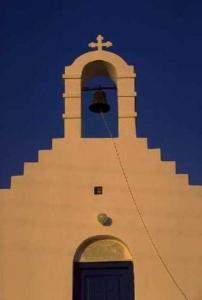
• One of the best maritime museums in the Cyclades is located right in Mykonos town, detailing the nautical tradition for which Greece is so well known. There are at least 365 churches and chapels on the island (and more are being built), most of them endowed by sailors safely returning home during the 17th and 18th centuries.
• There is documented proof of man’s presence on Mykonos dating back to the 7th millennium BC. And, there is a vaulted Mycenaean tomb on the grounds of a luxury hotel! Neolithic settlements can be found throughout the island at numerous locations.
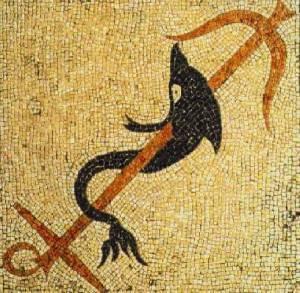 • The nearby island of Delos was the most important religious site in the Aegean in antiquity, and dates back to the 3rd millennium BC. There is so much to see at this site (it is actually the largest open-air museum in Europe!) that you need more than one visit just to scratch the surface of this incredibly well preserved archaeological site. Today, the island is well secured by guards making sure that no one removes even one small stone from the island. It strictly adheres to its 15:00 closing time, and even private yachts are not allowed to anchor near its shores overnight. Only licensed excursion boats based on Mykonos and professional guides are allowed to take visitors to Delos. • The nearby island of Delos was the most important religious site in the Aegean in antiquity, and dates back to the 3rd millennium BC. There is so much to see at this site (it is actually the largest open-air museum in Europe!) that you need more than one visit just to scratch the surface of this incredibly well preserved archaeological site. Today, the island is well secured by guards making sure that no one removes even one small stone from the island. It strictly adheres to its 15:00 closing time, and even private yachts are not allowed to anchor near its shores overnight. Only licensed excursion boats based on Mykonos and professional guides are allowed to take visitors to Delos.
• The local celebrated revolutionary, Mando Mavrogenous, was extremely instrumental in the Greek War of Independence. She emptied her family’s coffers and spent their entire fortune on a fleet of ships and their crew in order to defeat the Turks. Later during the war, when the Turks invaded Mykonos, she led an “army” of teenagers and half-naked women, all who remained on the island after the men had left to fight, and to the great surprise of the invaders, repelled their attack. A statue dedicated to her memory is prominently displayed near the waterfront, right in the center of Mando Mavrogenous or Taxi Square.
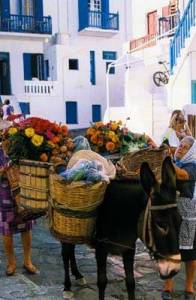 • While Mykonos appears almost desert-like in the hot summer months, it has one of the richest flora in the Aegean, as can be seen in the spring months when the wildflowers appear and cover the hillsides. During the summer season, local people on their donkeys can be found every day on the waterfront selling their flowers in the open market … you’ll see them not far from the pelicans waiting for the fishing boats to return with a nice “snack.” • While Mykonos appears almost desert-like in the hot summer months, it has one of the richest flora in the Aegean, as can be seen in the spring months when the wildflowers appear and cover the hillsides. During the summer season, local people on their donkeys can be found every day on the waterfront selling their flowers in the open market … you’ll see them not far from the pelicans waiting for the fishing boats to return with a nice “snack.”
• Apollo, the god of light, was born on Delos. Thereafter, it was decreed a sacred island, and no mortal could be born nor die there. Pregnant women and those near death were transported, five-minutes away by caique, to the nearby island of Rhenia.
• The grandson of the god Apollo, the god of “daylight,” was named Mykonos. Aenios, Apollo’s son and father to Mykonos, was married to a niece of the god Dionysus, the god of “fun”, named Ryo. The island was thus named after their son; how fortuitous could it be that these deities could so early on describe what would represent present-day Mykonos … an island filled with light and fun!
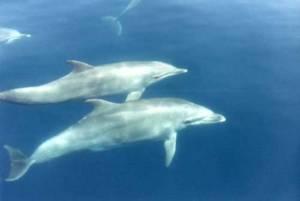 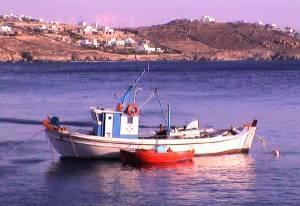
|
|



